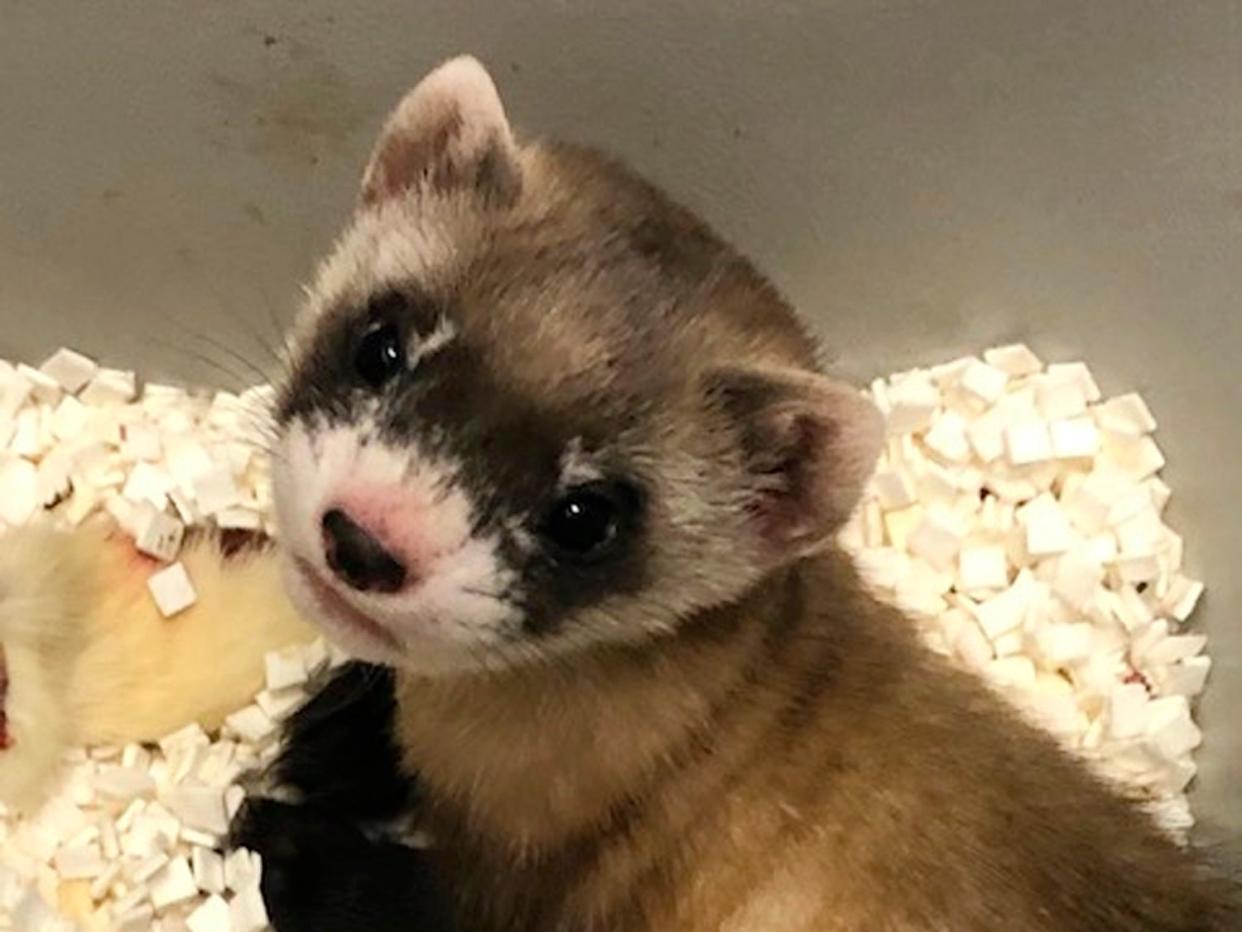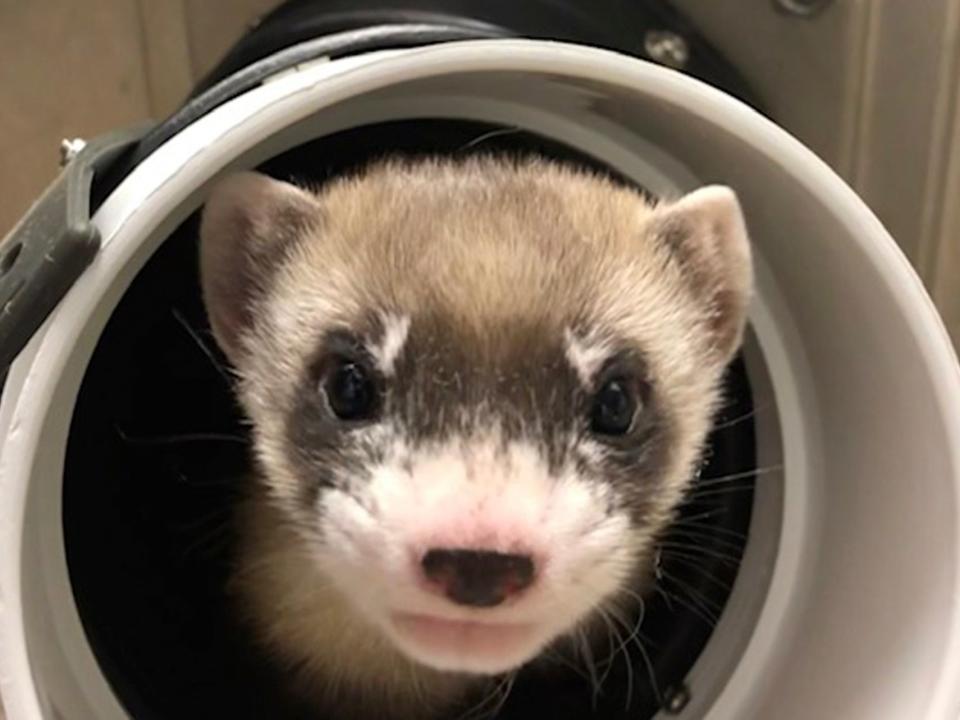Black ferret who died 30 years ago cloned in US first for endangered species

Elizabeth Ann, the first cloned black-footed ferret and first-ever cloned US endangered species
(AP)Scientists have cloned a black-footed ferret from the genes of an animal that died over 30 years ago in a first for US endangered species.
The cloned ferret, named Elizabeth Ann, was born on 10 December and the successful cloning was announced on Thursday.
The young animal is a genetic copy of a ferret named Willa who died in 1988 and whose remains were frozen in the early days of DNA technology.
The cloning of Elizabeth Ann marks the first cloned black-footed ferret and the first-ever cloned US endangered species.
The ferret species, which has characteristic dark eye markings resembling a robber’s mask, is charismatic and nocturnal and feed’s exclusively on prairie dogs.
“You might have been handling a black-footed ferret kit and then they try to take your finger off the next day,” US Fish and Wildlife Service black-footed ferret recovery coordinator Pete Gober said on Thursday. “She’s holding her own.”
Elizabeth Ann was born and is being raised at a Fish and Wildlife Service black-footed ferret breeding facility in Fort Collins, Colorado.
The species was previously thought to be extinct until 1981, and scientists gathered the remaining population for a captive breeding program that has released thousands of ferrets since the 1990s.
However, lack of genetic diversity prevents an ongoing risk, and Elizabeth Ann and future clones of Willa will form a new line of black-footed ferrets for studies to assist conservation.
Elizabeth Ann was born to a tame domestic ferret to avoid putting a rare black-footed ferret at risk and was cloned from Willa’s tissues that were kept in a “frozen zoo” run by San Diego Zoo Global.
There currently are no plans to release the young ferret or future clones of Willa into the wild, Mr Gober said.

Texas-based cloning company Viagen cloned Willa through coordination by Revive & Restore, a wildlife conservation organisation focused on biotechnology.
Ben Novak, the lead scientist of the biotechnology-focused conservation nonprofit that coordinated ferret cloning, said such techniques can really make a “difference.”
“Biotechnology and genomic data can really make a difference on the ground with conservation efforts,” he said.
The nonprofit in Sausalito, California, promotes genetic research into imperiled life forms ranging from sea stars to jaguars.
Revive & Restore co-founder and executive director Ryan Phelan said the company asked: “How can we actually apply some of those advances in science for conservation?”
“Because conservation needs more tools in the toolbox. That’s our whole motivation. Cloning is just one of the tools.”
Cloning could eventually bring back extinct species such as the passenger pigeon and the group’s projects even include trying to bring back a woolly mammoth, a creature extinct for thousands of years.
“With these cloning techniques, you can basically freeze time and regenerate those cells,” Mr Gober said.
“We’re far from it now as far as tinkering with the genome to confer any genetic resistance, but that’s a possibility in the future.”
Read More
World must switch to plant-based diets to halt biodiversity crisis, say experts
Cells at San Diego Zoo lead to cloning of endangered horse

